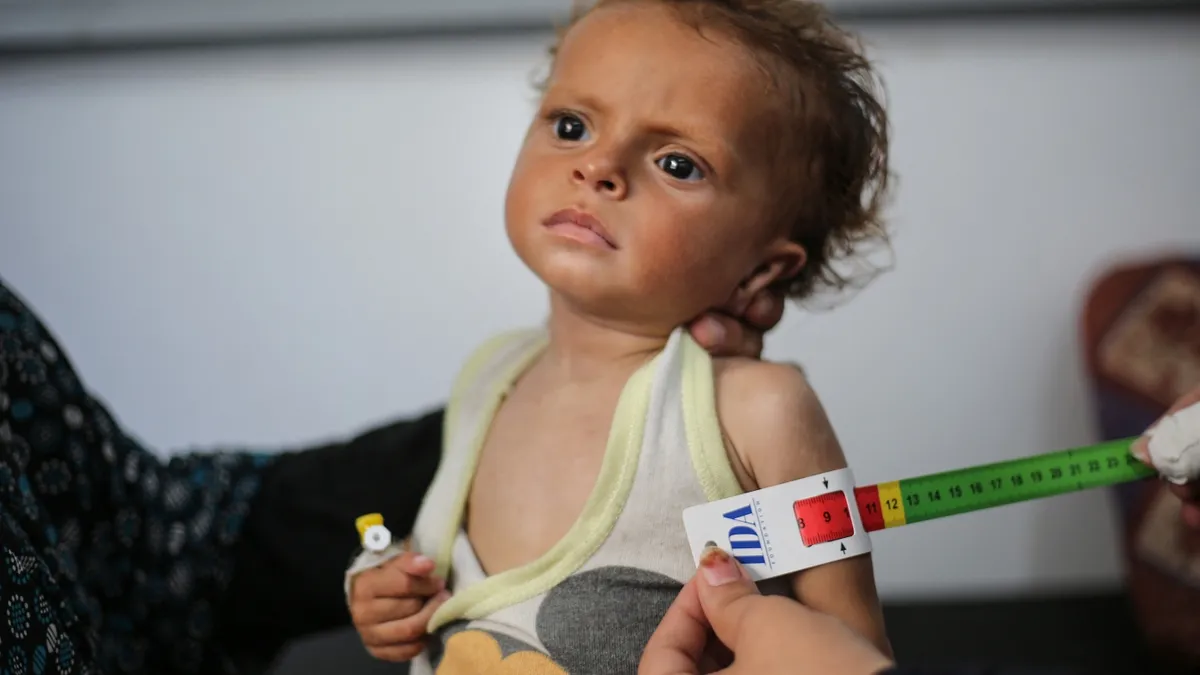
After weeks of escalating concerns regarding hunger in Gaza, a United Nations-backed panel has officially declared that famine is underway in northern Gaza. This alarming announcement warns that over half a million individuals are teetering on the brink of starvation as the crisis deepens within the densely populated Palestinian enclave. The Integrated Food Security Phase Classification (IPC) confirmed on Friday that famine conditions have taken root in the Gaza Governorate, which includes Gaza City and its surrounding areas. Furthermore, the IPC cautioned that these dire conditions could extend to central and southern Gaza by late September.
This declaration comes nearly two years into an armed conflict with Israel, which was ignited by the October 7 invasion by Hamas. Israeli restrictions have significantly limited the flow of food and aid into Gaza, exacerbating the humanitarian crisis. Historically, Israel has disputed claims regarding food insecurity in the region.
According to Jean-Martin Bauer, the Director of Food Security and Nutrition Analysis at the World Food Programme, the declaration of famine signifies the presence of widespread starvation, illness, and mortality. However, the process to declare a famine is complex and requires careful analysis. Below are five essential points regarding the steps leading to such a declaration.
The globally recognized system for tracking food emergencies originated in the 1980s, as Tim Hoffine, the Deputy Chief of Party-Innovation at the Famine Early Warning Systems Network (FEWS NET), explains. In response to famines across East and West Africa, U.S. aid officials recognized the necessity for a robust method to monitor global hunger. This led to the establishment of FEWS NET by the U.S. Agency for International Development (USAID) in 1985, aimed at providing independent, timely, and evidence-based analyses to prevent future famines.
Despite the establishment of FEWS NET, a universal standard for defining the severity of hunger crises was lacking, complicating coordination among donors and aid organizations. Former World Food Programme spokesperson Steve Taravella emphasized the critical need for a scientific, authoritative method for assessing hunger levels. In 2004, during a food emergency in Somalia, FEWS NET collaborated with international partners to create the Integrated Food Security Phase Classification initiative — commonly known as IPC. This initiative serves as the authoritative mechanism for measuring hunger levels across different regions, coordinated by the U.N. Food and Agriculture Organization in Rome.
The IPC categorizes hunger on a five-phase scale, with Phase 1 indicating normal conditions. Phase 2 represents communities under stress, where households struggle to afford essentials. As the scale progresses to Phase 3 (crisis) and Phase 4 (emergency), the situation worsens, with individuals resorting to extreme coping strategies. Only at Phase 5 is a location officially classified as experiencing famine.
For a region to be deemed in famine, three specific criteria must be met: first, at least 20% of households must face catastrophic conditions, leading to acute malnutrition and mortality. Second, a minimum of 30% of children under five must suffer from acute malnutrition. Lastly, the mortality rate must reach at least two deaths per 10,000 adults each day from non-trauma causes. As highlighted by Hoffine, hunger can lead to death not only through starvation but also by severely weakening individuals' immune systems, leaving them vulnerable to diseases.
Even if FEWS NET or the IPC determine that a location meets all three famine criteria, they are unable to declare famine independently. Their findings require review and approval from a committee of independent experts convened by the IPC. Ultimately, the official declaration rests with government institutions, U.N. leadership, and high-level representatives, according to Hoffine.
It is crucial to recognize that starvation can occur long before an official famine declaration is made. Many individuals may be suffering from hunger-related mortality even when the criteria for Phase 5 have not yet been met. Hoffine noted that in Gaza, while the situation is dire, individuals are expected to continue facing mortality from hunger-related causes. The longer the crisis persists without intervention, the more profound the mortality rates will become.
Despite the bleak circumstances, Hoffine and Taravella stress that it is not too late to take action in Gaza. Both FEWS NET and IPC assert that the famine conditions can be alleviated if hostilities cease and humanitarian aid workers receive full access to the region. The goal of the famine classification system is to alert the global community before it is too late.
While higher-phase designations do not automatically mandate action, they serve as powerful tools for mobilizing a response. As Taravella pointed out, the recognition of famine can place pressure on governments and agencies to increase aid and compel Israel to permit full humanitarian access. In the words of WFP chief economist Arif Husain, "Today we see crises in real time, so we cannot say we did not know," emphasizing the urgent need for a coordinated response to avert further tragedy in Gaza.